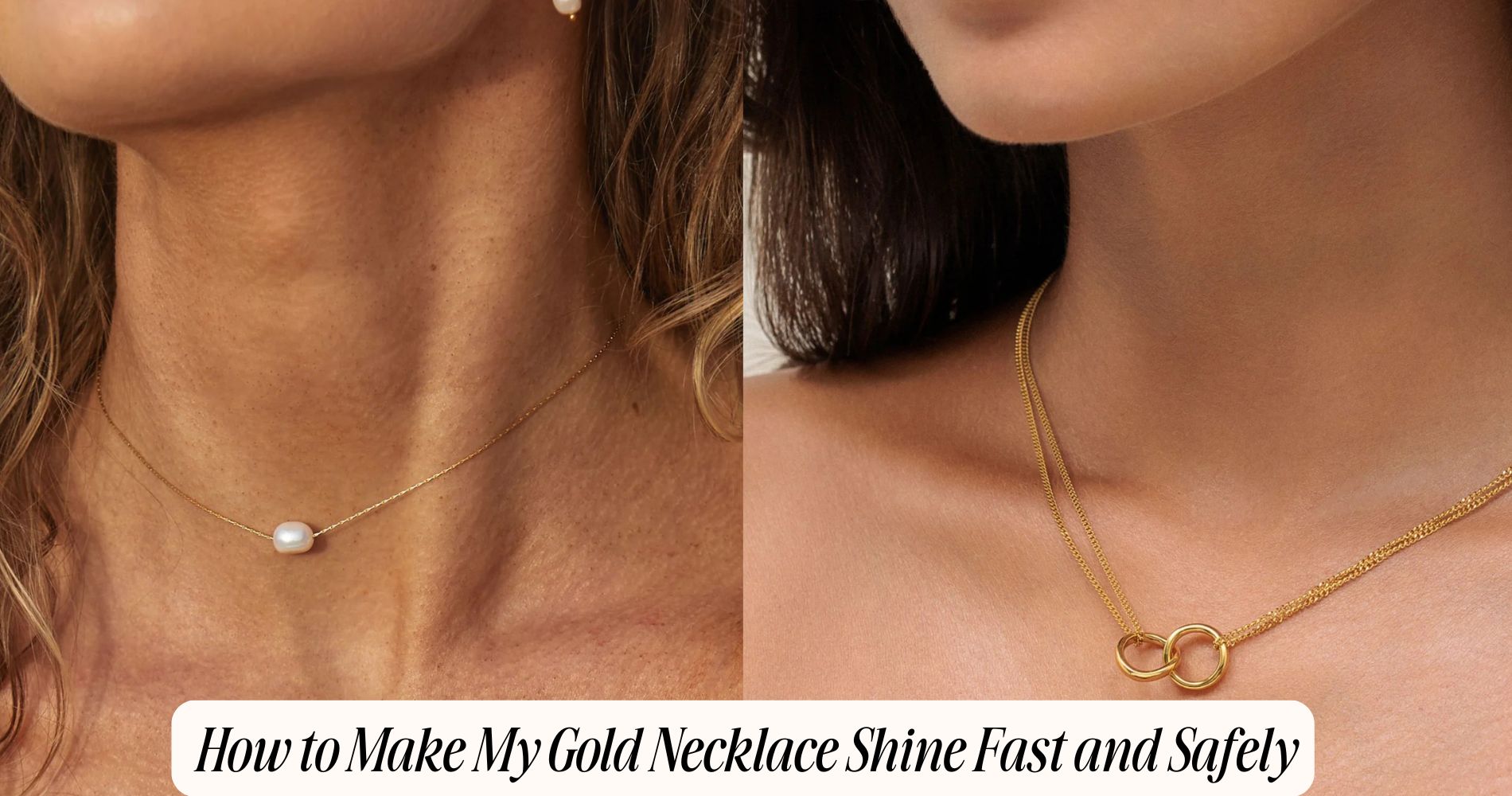
How to Make My Gold Necklace Shine Fast and Safely
Wondering how to make my gold necklace shine? First, confirm your necklace is solid gold or gold-filled (not plated or with delicate stones). Mix a few drops of mild dish soap in warm water, soak for 10–15 minutes, then gently scrub crevices with a soft toothbrush. Rinse in lukewarm water and pat dry with a lint-free cloth. Avoid bleach, ammonia, abrasives, and ultrasonic cleaners on delicate pieces. Store in a dry pouch and use a gold polishing cloth for extra sparkle—these tips work especially well for pieces from our Minimalist Gold Necklace collection.
Understanding Your Type of Gold Jewelry
Before you clean a gold necklace, identify exactly what you’re working with: solid gold, gold-filled, or gold-plated, and whether it includes alloys like nickel or delicate stones, pearls, or enamel.
You must understand gold karat significance: 24K is soft and bends easily, 18K and 14K are harder, while lower karats contain more alloys that may react to chemicals or abrasives. Misjudging karat leads to surface damage, stress fractures, or stone loosening.
Evaluate necklace design impact next. Fine chains, hollow links, intricate filigree, and hinged components can kink, dent, or trap residue.
Clasps, solder points, and settings are structural weak points that can fail under excessive force. When you know type, karat, and design, you’ll choose only methods that won’t compromise integrity.
Quick At-Home Cleaning Methods That Really Work
Once you’ve identified the type and karat of your gold necklace, you can safely use simple, fast cleaning methods with household items you already have.
Start with a mild dish soap bath: mix a few drops of gentle liquid soap in warm (not hot) water, then soak your necklace for 10–15 minutes. Use a soft toothbrush to dislodge skin oils and cosmetics, brushing along links and settings, then rinse with lukewarm water and pat fully dry with a lint‑free cloth.
For heavier buildup, prepare a baking soda paste by mixing three parts baking soda with one part water. Apply gently, then rinse thoroughly.
Alternatively, you can briefly immerse solid gold (not plated) pieces in a diluted vinegar solution, then rinse and dry immediately.
What to Avoid So You Don’t Damage Your Necklace
Although gold is durable, you can still damage your necklace quickly if you expose it to the wrong products or conditions.
Don’t use harsh cleaning solutions like bleach, ammonia-heavy bathroom sprays, or acetone; these chemicals can pit the metal, weaken soldered joints, and strip protective finishes.
Avoid abrasive materials, including baking soda pastes, powdered cleansers, toothpaste, scouring pads, and stiff brushes.
These can create micro-scratches that dull the surface and, on plated pieces, wear through the gold layer.
Keep your necklace away from chlorinated pools and hot tubs, as chlorine can attack gold alloys and compromise clasps.
Don’t use ultrasonic cleaners on delicate, hollow, or stone-set chains unless a professional jeweler confirms it’s safe for your specific piece.
Extra Tips to Boost Shine and Prevent Tarnish
Protecting your necklace from damage is only half the job; consistent care can also enhance its shine and slow tarnish.
Store your gold in a dry, closed container, ideally in individual soft pouches so chains don’t abrade each other. Add silica gel packets to reduce moisture and minimize oxidation on clasps and mixed-metal parts.
Use dedicated polishing cloths designed for gold, not generic household fabrics, to avoid micro-scratches. Wipe the necklace gently after each wear to remove skin oils, sweat, and cosmetics that dull the surface.
For added protection, consider reputable anti tarnish solutions such as treated storage strips or tabs. Keep these near, not directly on, the necklace so they absorb reactive gases without leaving residues.
When to Skip DIY and See a Professional Jeweler
Even if you’re comfortable cleaning basic grime at home, some situations call for a professional jeweler instead of DIY methods.
If the necklace has loose stones, bent links, worn clasps, or visible cracks in solder joints, stop home care and seek professional services immediately. A jeweler can perform ultrasonic or steam cleaning safely after checking structural integrity.
Avoid DIY if the necklace includes soft gems (opal, pearl, emerald), intricate filigree, antique settings, or unknown metal alloys. Household chemicals or aggressive brushing can cause irreversible damage.
If you’re unsure of the necklace’s value, request a jewelry appraisal before any intensive cleaning. The jeweler can confirm metal purity, detect previous repairs, recommend the safest cleaning method, and document condition for insurance.
Frequently Asked Questions
Can I Wear My Gold Necklace in the Shower or While Swimming?
You shouldn’t. Regular showering or swimming accelerates gold necklace maintenance needs because water exposure effects include soap film, chlorine corrosion, and weakened clasps. Remove it beforehand, rinse occasionally with clean water, and dry thoroughly to preserve structural integrity.
How Often Should I Clean a Gold Necklace I Wear Daily?
You should clean a gold necklace you wear daily every 1–2 weeks. Adjust cleaning frequency based on visible residue, sweat, or product buildup. Use mild soap, lukewarm water, soft cloth, and avoid abrasive or harsh chemical cleaners.
Does the Karat of Gold Affect How Shiny It Looks?
Yes, karat purity affects shine. Higher karat gold looks richer but softer and less reflective; lower karat gold alloy often appears brighter and more mirror-like. You’ll clean gently and more frequently as karat decreases.
Is It Normal for a New Gold Necklace to Look Dull Quickly?
Yes, it’s normal if surface oils, soap, or residue accumulate. Prioritize new necklace care: remove during showers, avoid lotions and perfumes, and store separately. For jewelry maintenance tips, clean gently with mild soap, warm water, and a soft cloth.
Can I Safely Combine Gold Necklace Cleaning With Gemstone Care?
You can combine care only if stones are hard, untreated, and securely set. Use mild soap, lukewarm water, soft brush; avoid ammonia, ultrasonics. Prioritize gemstone cleaning techniques over aggressive gold necklace maintenance to prevent scratching, loosening, or clouding.
Conclusion
Now that you know what type of gold you’re working with and how to clean it safely, you can restore shine without risking damage. Stick to gentle methods, avoid harsh chemicals and abrasives, and inspect clasps and settings as you go. Store your necklace properly to slow tarnish and reduce wear. When in doubt, or if stones, plating, or sentimental pieces are involved, don’t experiment—take your necklace to a professional jeweler.






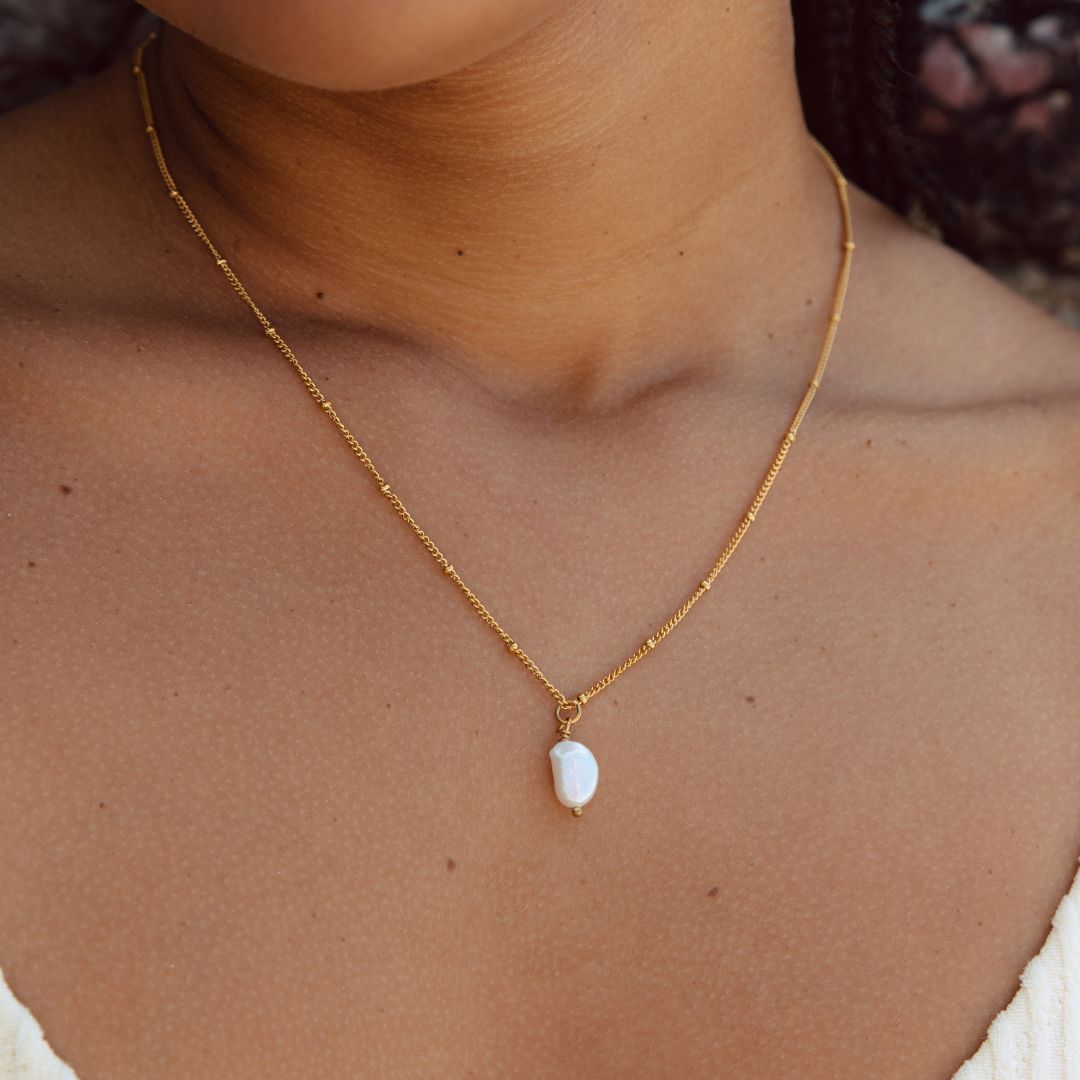
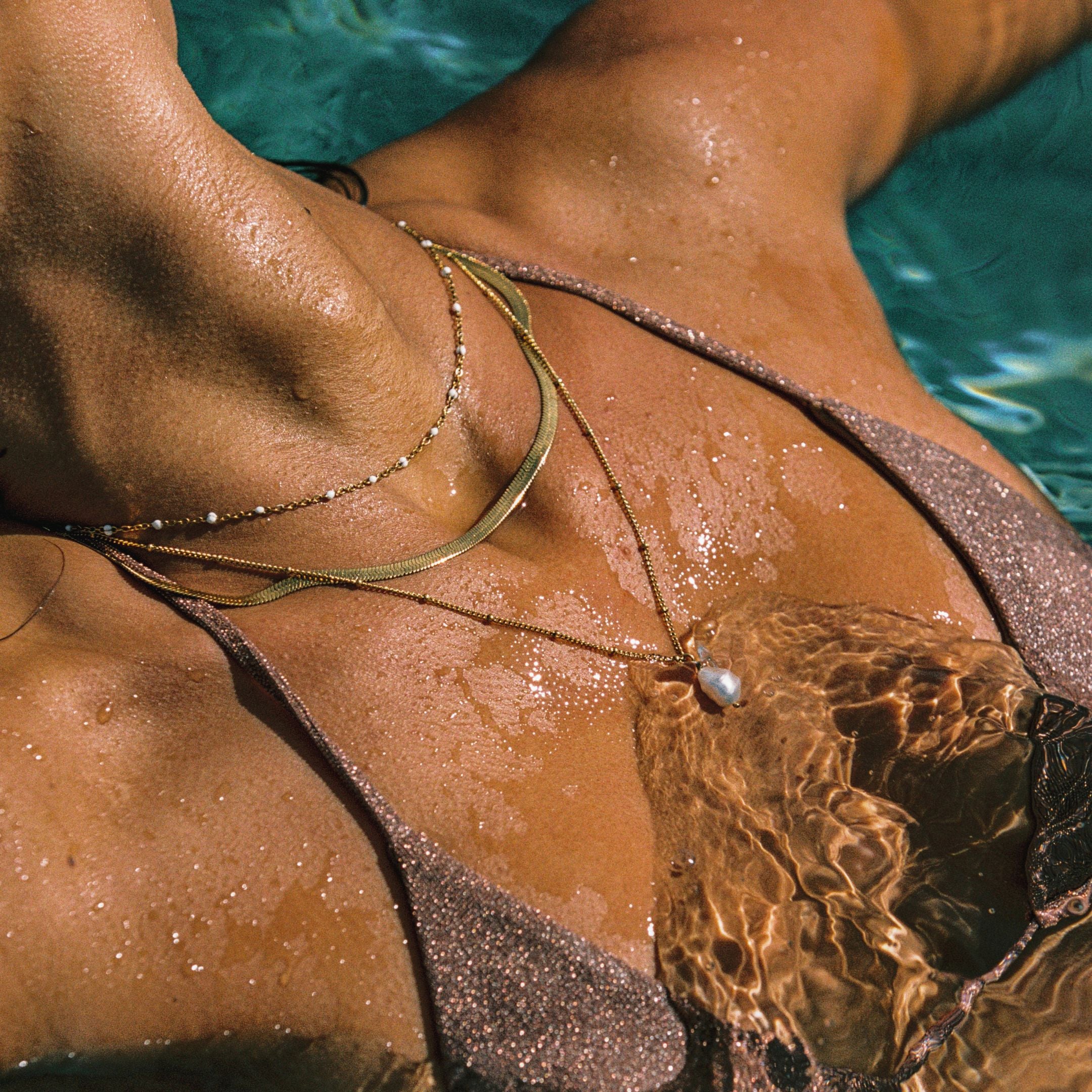
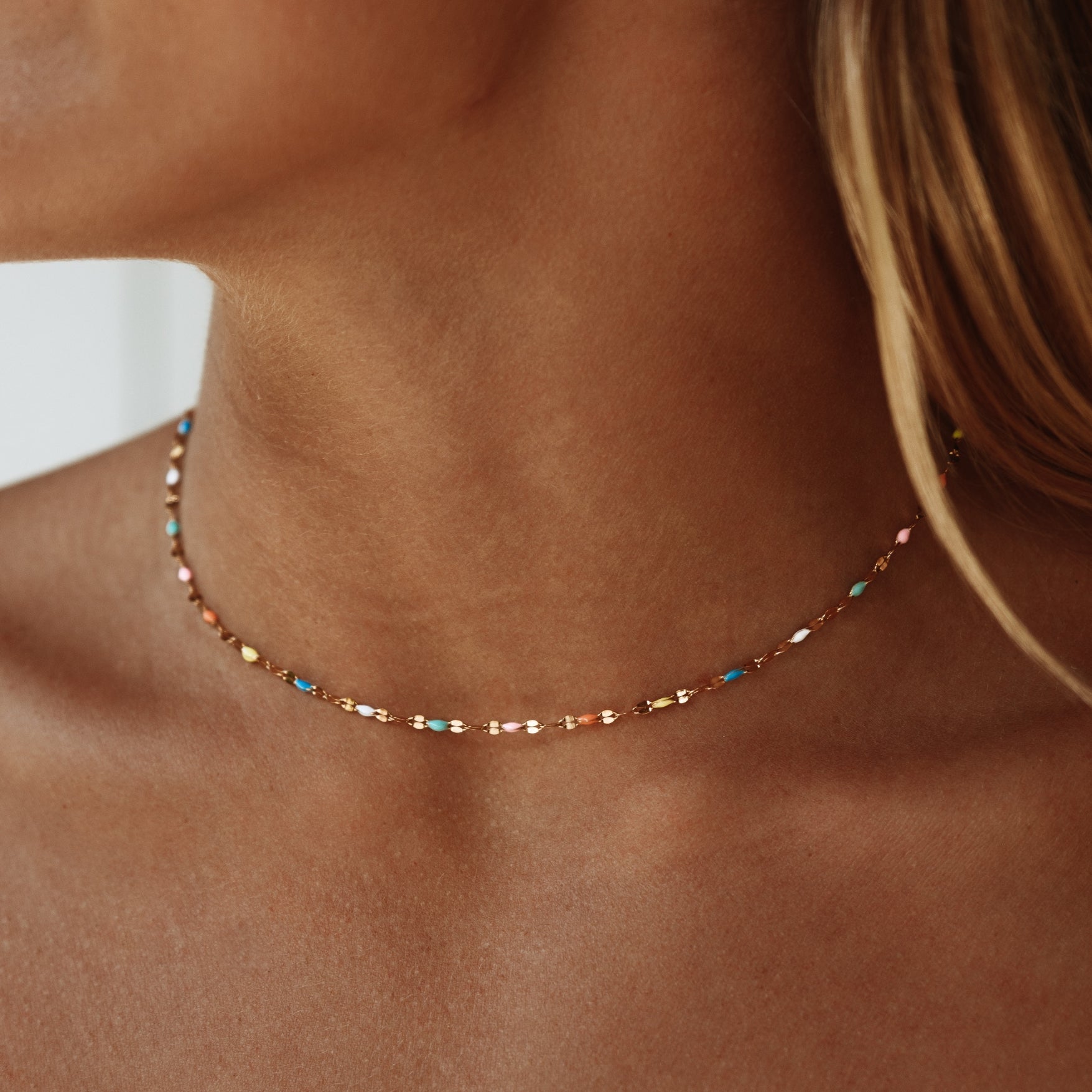
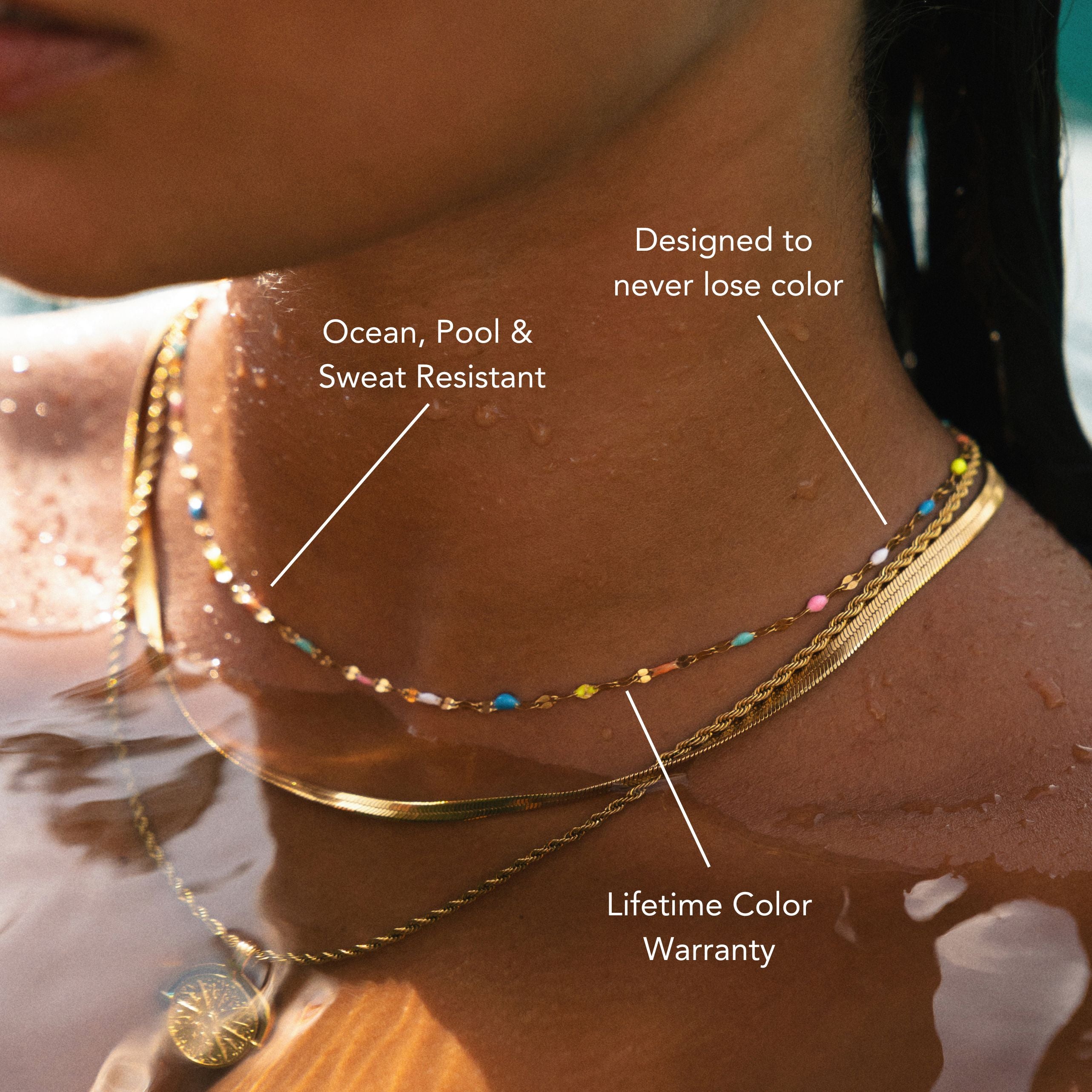
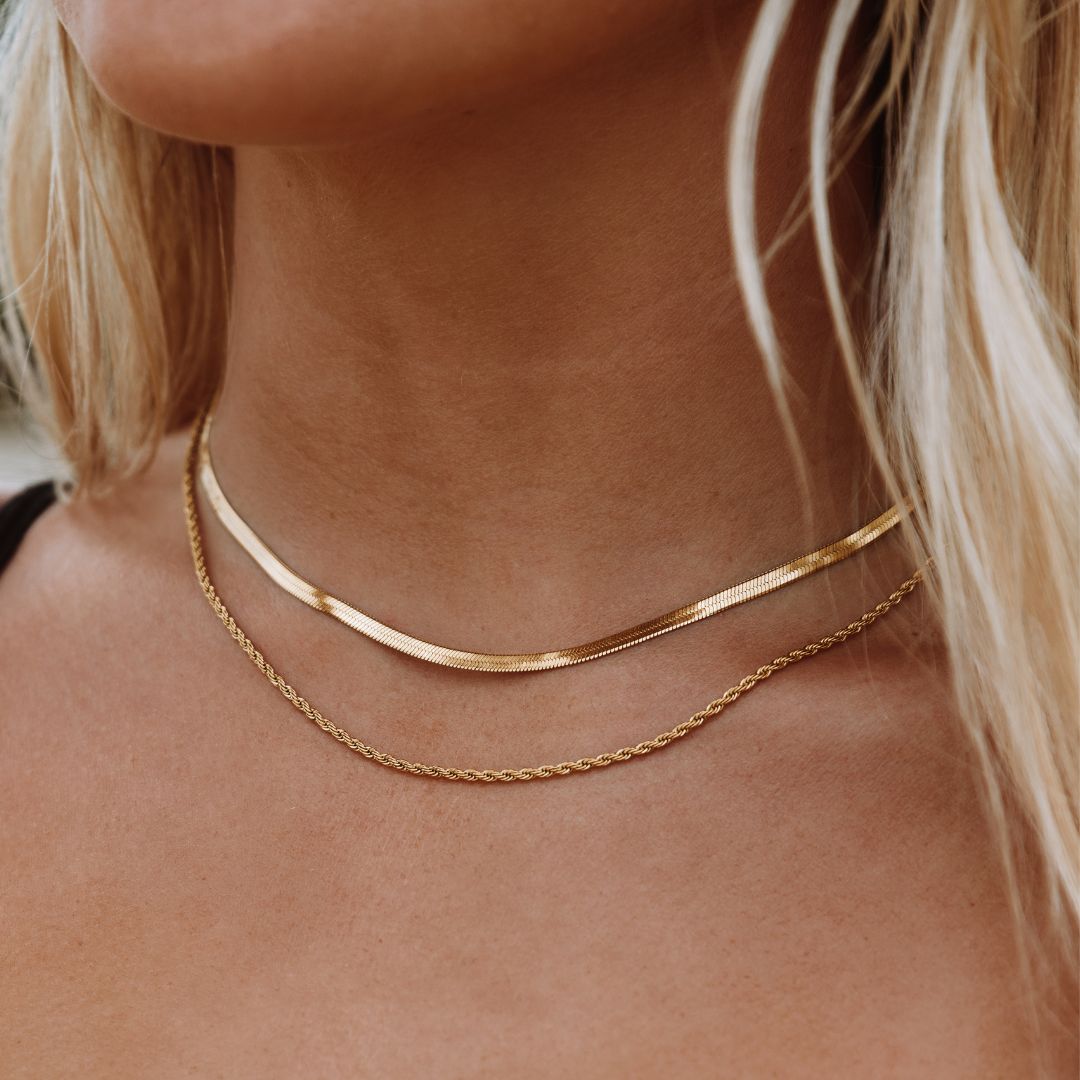
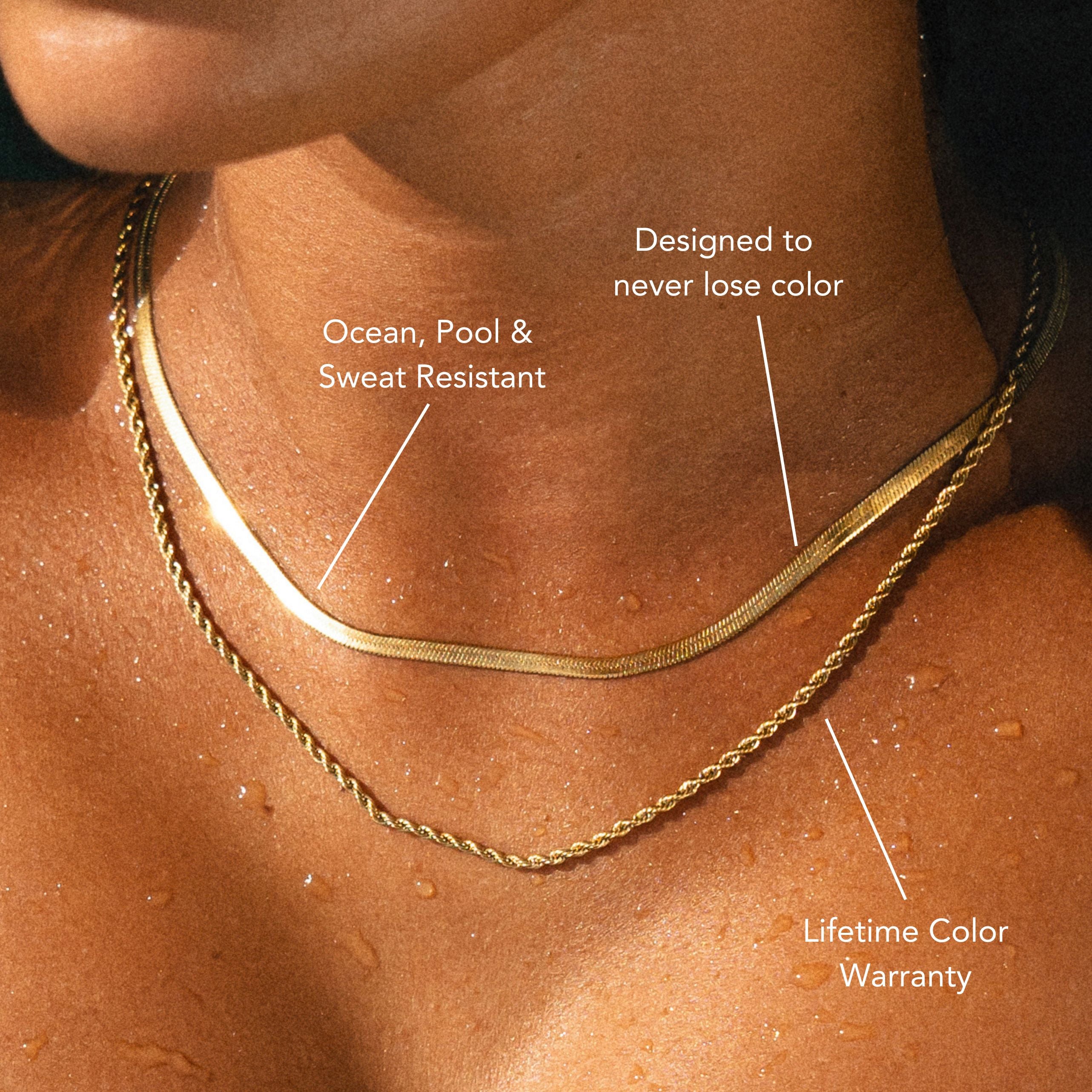
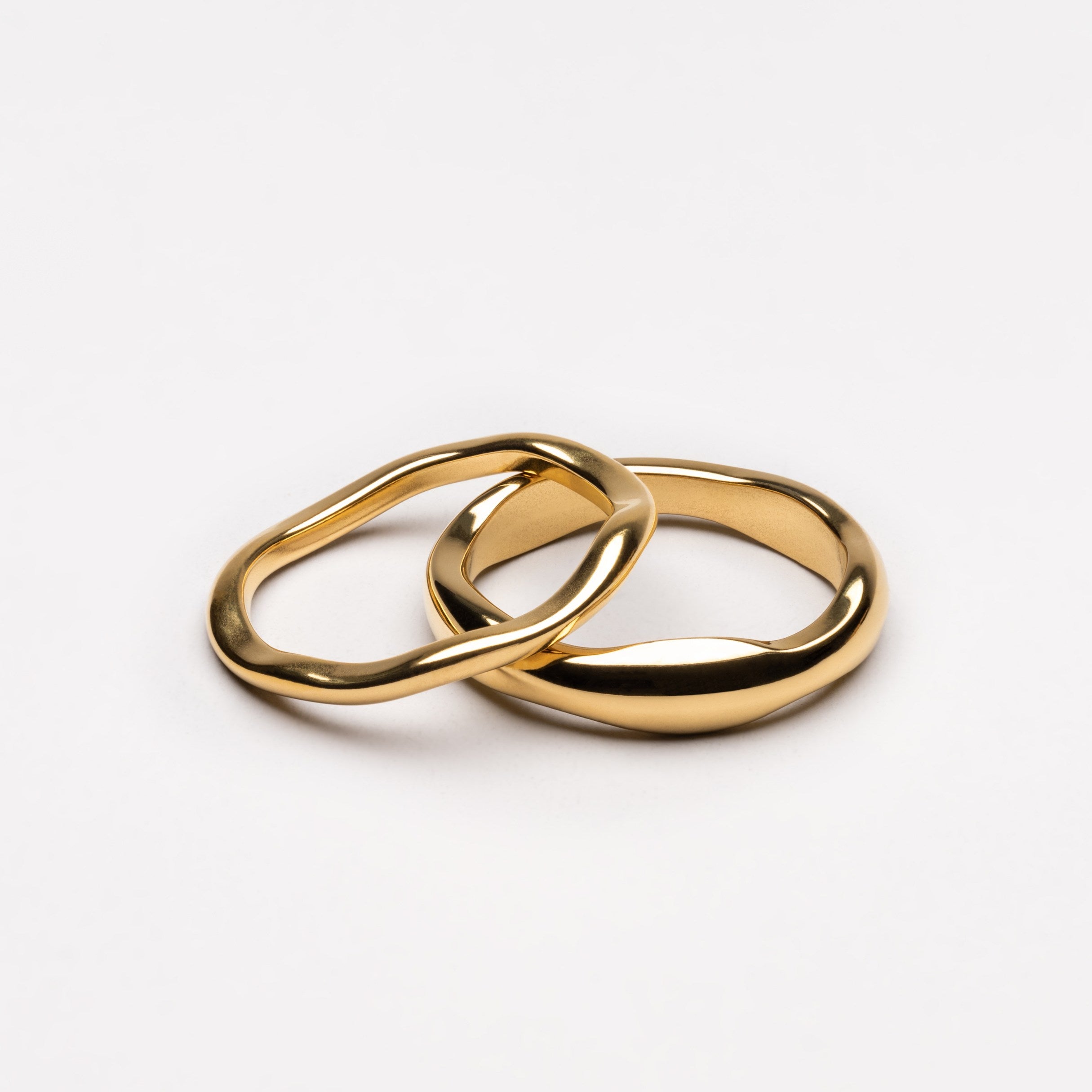

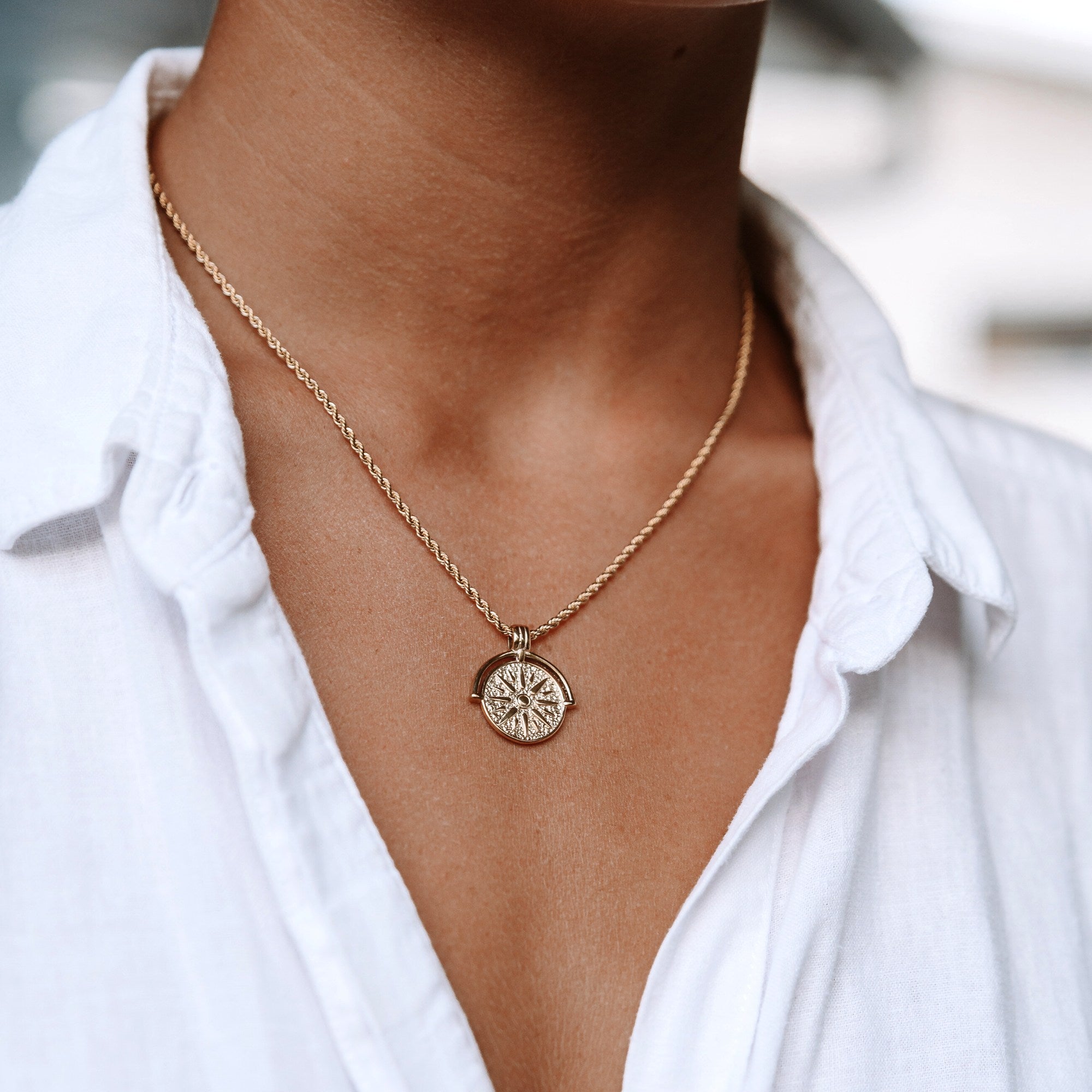
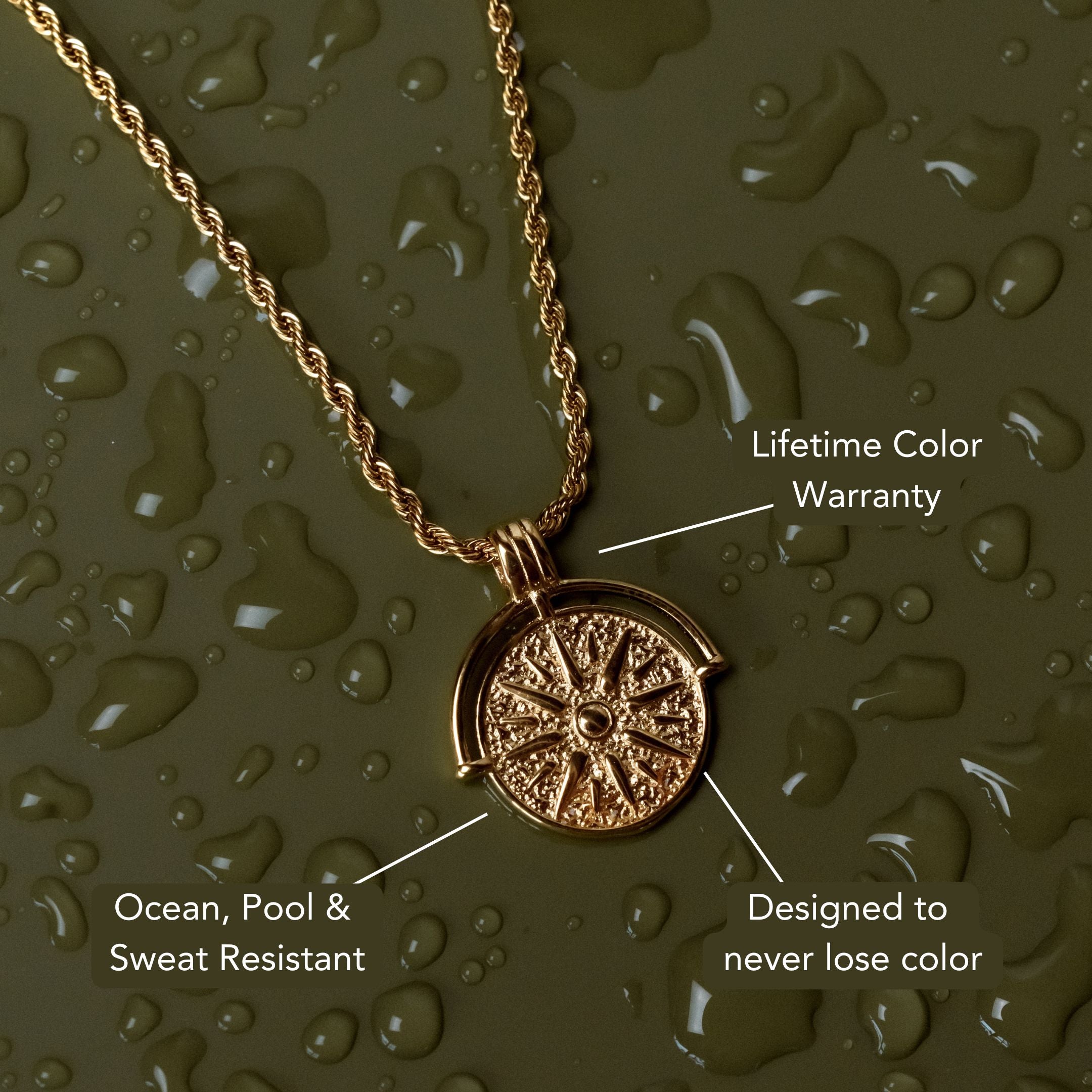






Leave a comment
This site is protected by hCaptcha and the hCaptcha Privacy Policy and Terms of Service apply.